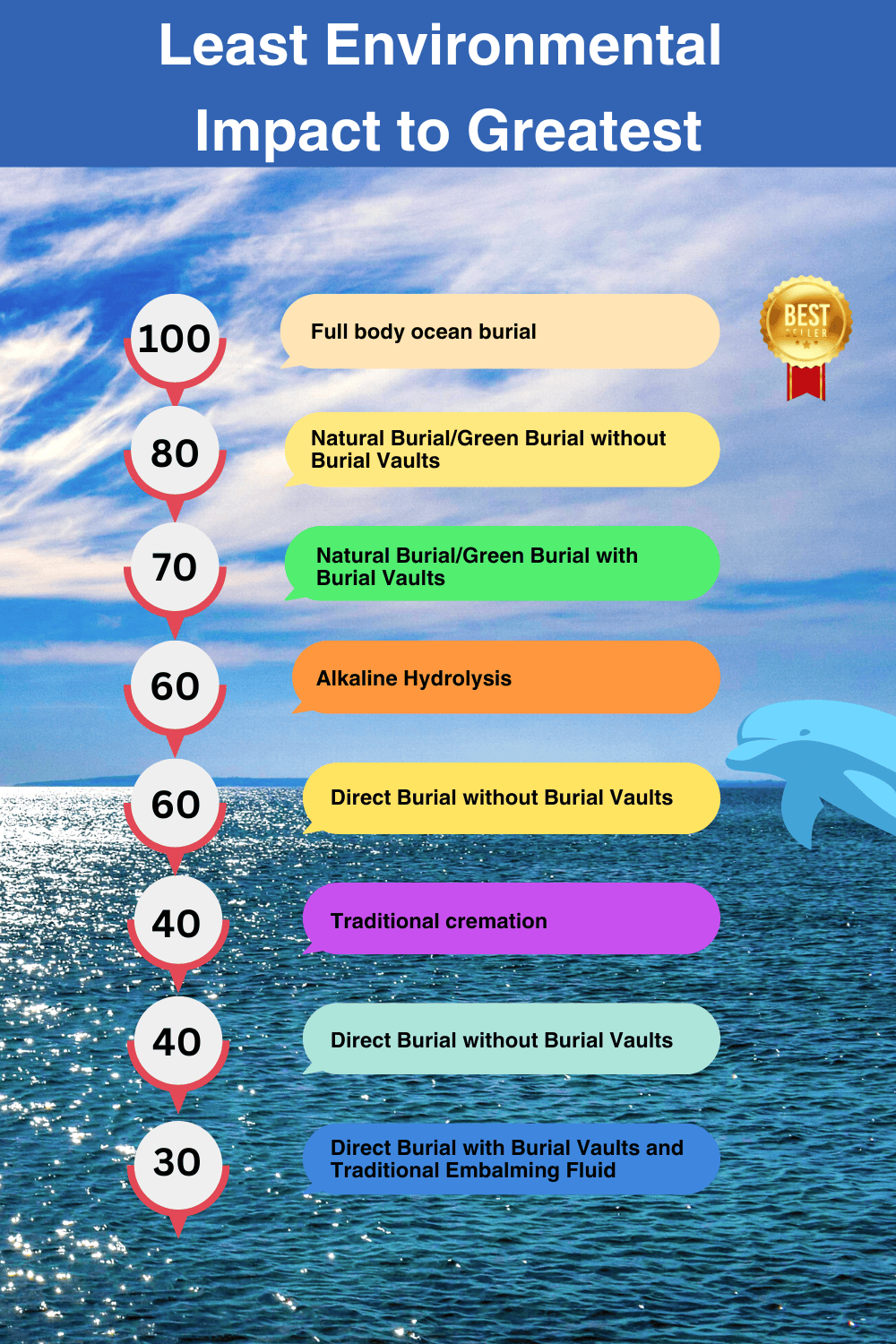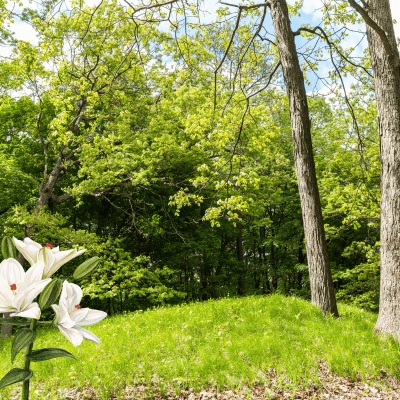In contemporary society, people are becoming more aware of how traditional burial practices affect the environment. Because of this, more people are looking for alternatives that reflect their beliefs of sustainability for the environment. Among these options, green burials have arisen as a lovely and environmentally responsible option. The idea of green burials, its advantages, and their deep link to the deceased and the natural world will all be covered in this piece. We’ll also examine the San Diego area’s alternatives for green burial.
Defining Green Burials
Green burials, often known as natural or eco-friendly burials, differ from traditional burial customs. They emphasize burying the deceased in a manner that has less negative influence on the environment and encourages natural decomposition.
Green burials, as opposed to conventional ones, place an emphasis on simplicity and employ biodegradable materials.
Funerals are increasingly including the concept of green burials and the practice itself.
Eco-Conscious Practices
Biodegradable Caskets and Shrouds: Instead of using metal or concrete caskets that can impede decomposition, green burials utilize biodegradable options. These are made from materials such as sustainably harvested wood, bamboo, or wicker. With the help of these elements, the body can return to the earth’s natural life cycle while being seamlessly integrated into it.
Absence of Embalming: Embalming fluids, commonly used in traditional burials, contain chemicals that can harm the environment. In green burials, embalming is typically avoided or minimized, allowing the body to decompose naturally and return to the soil. This practice eliminates the introduction of toxic substances into the ecosystem.
Natural Landscapes: Green burials often occur in designated natural burial grounds that preserve and protect existing ecosystems. These locations provide a serene and harmonious setting for the deceased and their living relatives. Natural burial grounds are designed to blend seamlessly with the surrounding environment, fostering a sense of connection and tranquility.
Environmental Benefits – Significant and Far-reaching
Conservation of Land: Conventional burials require substantial land use and contribute to the depletion of valuable natural spaces. Green burials promote land conservation by utilizing designated burial grounds incorporating protected natural landscapes. These burial sites serve as sanctuaries, preserving green spaces and promoting biodiversity.
Reduced Carbon Footprint: The production of traditional caskets and headstones and the maintenance of manicured lawns in cemeteries consume valuable resources and contribute to greenhouse gas emissions. Green burials minimize this carbon footprint by opting for biodegradable materials and natural land management practices. Many Individuals choose to reduce their environmental impact by choosing a green burial and contributing to a more sustainable future.
Preservation of Wildlife: Natural burial grounds act as sanctuaries for local flora and fauna, providing habitats and supporting biodiversity. By choosing a green burial, individuals contribute to preserving and restoring ecosystems. They ensure a healthier and more vibrant environment for future generations. These burial sites can become thriving ecosystems, fostering the growth of native plants, attracting wildlife, and creating valuable ecological corridors.
Meaningful Connection and Healing through Green Funerals
Beyond the environmental advantages, green burials offer a significant and healing experience for families and loved ones:
Connection to Nature: Green burials enable individuals to connect profoundly with nature. The tranquil landscapes, gentle sounds, and the cycle of life found in natural burial grounds can bring solace and peace during the grieving process. Being in nature can evoke a deep connection and offer comfort, allowing mourners to find relief and healing.
Personalization and Participation: Green burials encourage personalization and active involvement in the burial process. Families can participate in the body’s preparation, selecting eco-friendly materials and planting native trees or flowers as living memorials. This active engagement provides a sense of closure and allows for expressing personal beliefs and values.
Spiritual and Emotional Healing: The simplicity and naturalness of green burials can facilitate a sense of closure and acceptance, providing a space for reflection, remembrance, and the celebration of a life well-lived. This connection to the Earth can be spiritually uplifting and emotionally comforting. Green burials acknowledge the interconnectedness of life and death, allowing individuals to find solace in the cycle of nature.
Green Burials Compared to Other Methods
To rate common cremation and burial practices in terms of their environmental impact, we provided a general assessment based on commonly known information. These ratings are subjective and not strictly based on specific scientific measurements. The actual ecological effects may vary based on various factors. Researching and consulting with professionals specializing in green funeral practices for detailed and accurate information is essential. Here’s a rating scale from 0 to 100, with 100 being the most environmentally friendly (green) option.
Full-Body Ocean Burial: Full-body ocean burial promotes natural decomposition and minimal environmental impact without embalming or additional non-biodegradable materials. Rating: 100.
Natural Burial/Green Burial without Burial Vaults: These practices prioritize minimal environmental impact, allowing for natural decomposition and the body’s return to the earth. Rating: 80.
Natural Burial/Green Burial with Burial Vaults: While still environmentally friendly, burial vaults can slightly increase the impact due to non-biodegradable materials. Rating: 70.
Alkaline Hydrolysis: This process uses water, heat, and alkali to accelerate decomposition; alkaline hydrolysis requires less energy and produces fewer greenhouse gases than traditional cremation. Rating: 60.
Direct Burial without Burial Vaults: Direct burial without burial vaults allows for a more natural decomposition process, reducing environmental impact. Rating: 60.
Cremation: Traditional cremation may have a carbon footprint due to fossil fuel usage, but modern practices are becoming more energy-efficient and offer potential for greener alternatives. Rating: 40.

Burial Vault Options – Not the Best Environmentally
Direct Burial with Burial Vaults: Direct burial with burial vaults can have a higher environmental impact due to non-biodegradable materials. Rating: 40.
Direct Burial with Burial Vaults and Traditional Embalming Fluid: This combination can have an increased environmental impact due to the use of burial vaults. These vaults are typically made of non-biodegradable materials, as well as the use of traditional embalming fluid, which often contains chemicals that can be harmful to the environment. The rating for this combination is lower compared to other options.
It’s important to note that traditional embalming fluids commonly contain formaldehyde, which is known to have adverse environmental effects. However, there are alternative embalming fluids available that are more eco-friendly and utilize fewer harmful chemicals. These alternatives have a lesser environmental impact and could affect the rating differently. Rating: 30.
Green Cemeteries in Southern California
Eternal Hills Memorial Park: Located in Oceanside, Eternal Hills Memorial Park offers green burial options. They have a dedicated section called “Eco Preserve,” where natural burial practices are followed, including using biodegradable caskets or shrouds and minimal landscaping chemicals.
Joshua Tree Memorial Park: Situated in Joshua Tree, this cemetery embraces eco-friendly practices. They offer natural burial options, allowing for the interment of biodegradable containers directly in the earth without concrete vaults. The site promotes native plant restoration and conservation efforts.
Fernwood Cemetery & Funeral Home: Located in Mill Valley, near San Francisco, Fernwood Cemetery & Funeral Home is known for its commitment to environmental sustainability. They provide natural burial options and emphasize ecological preservation through biodegradable caskets, sustainable land management practices, and native landscaping.
Sholom Memorial Park: Located in Sylmar, Sholom Memorial Park is a Jewish cemetery incorporating green burial practices. They offer natural burial sections where simple, biodegradable caskets or shrouds are used, and minimal disturbance is made to the natural landscape.
Forest Lawn Memorial Park: While not exclusively a green cemetery, Forest Lawn Memorial Park in Glendale has implemented sustainable practices and offers eco-friendly burial options. They have sections dedicated to green burials, where biodegradable caskets or shrouds can be used, promoting a more natural approach to burial.
It’s important to note that practices and availability may change, so contacting a cemetery of interest is recommended to inquire about their current offerings and green burial options.
Green Burial – Conclusion
Green burials offer a gentle and sustainable approach to honoring the deceased while fostering a deep connection with the natural world. By embracing eco-conscious practices, these burials contribute to the preservation of the environment, conservation of land, and the restoration of ecosystems. Simultaneously, they provide a meaningful and healing experience for families and loved ones, allowing them to find solace, connection, and closure. Green burials exemplify the beauty of harmonizing with nature, ensuring a legacy of respect for the Earth and a more sustainable future for future generations.


